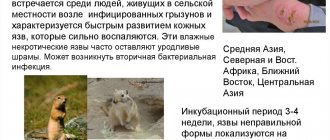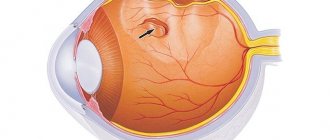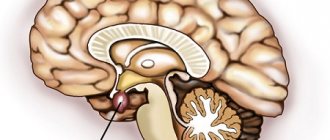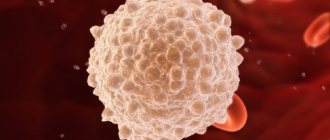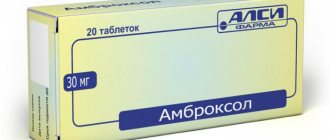- Differential diagnosis
- Antibiotic therapy
Segmental pneumonia is a disease in which the inflammatory process affects one or more segments of the lungs. The disease often occurs in children aged 3 to 7 years, but sometimes develops in adults and older children.
The disease often occurs in children
Right-sided segmental pneumonia is a fairly common disease. It requires correct diagnosis and adequate therapy, as it has potential mortality. Left-sided segmental pneumonia, due to the structure of the lungs, is observed less frequently.
Of all acute pneumonia, the segmental form accounts for 25% (more often only focal pneumonia is diagnosed). In 95% of cases the disease is unilateral, only in 5% the lungs are affected on both sides.
What is it and the difference from polysegmental
Anatomically, the lungs consist of segments (8 segments in the left lung and 10 in the right). Each bronchopulmonary segment receives oxygen from its bronchus and blood from its branch artery.
Segmental pneumonia is an infectious inflammatory disease in which the focus of inflammation affects all structural units of the segment, such as bronchioles, alveoli and bronchi. The inflammatory process provokes collapse, a kind of gluing of the alveoli. This causes the exclusion of this segment from the breathing process, that is, it makes gas exchange in this area impossible.
With segmental pneumonia, the focus of the disease is localized in one segment (in several - with polysegmental pneumonia ). This distinguishes this type of disease from focal, when inflammation affects part of a segment, and lobar, in which all segments of the lung in one lobe are affected.
The primary and secondary is distinguished . In primary pneumonia, it develops as an independent disease. In the secondary case, it is provoked by other inflammatory processes in the body, such as ARVI, influenza, and is a complication of an existing disease.
aged 3 to 7 years are most susceptible to this disease , but cases of the disease occurring in newborns and children under one year of age are also observed. The incidence of the disease in children is 25%.
Note! There are often cases when inflammation spreads to several segments of the lung, which causes the development of polysegmental pneumonia.
Diagnostics
In order for a clinician to suspect the occurrence of segmental pneumonia, it is necessary to carry out not only a series of laboratory and instrumental examinations, but also manipulations performed directly by a pulmonologist.
Thus, the first stage of establishing the correct diagnosis includes:
- familiarization with the medical history - to identify a chronic disease that could lead to the development of segmental inflammation in the lungs;
- collection and analysis of the patient’s life history;
- a thorough physical examination, aimed at listening to the patient using a phonendoscope and measuring temperature;
- a detailed survey of the patient is necessary to establish the first time of appearance and severity of symptoms, which, in turn, will indicate the severity of the disease.
Laboratory and instrumental diagnostic measures include:
- general clinical blood test;
- blood biochemistry;
- analysis of sputum produced when coughing;
- bacterial blood culture;
- chest x-ray;
- CT and MRI.
X-ray of the lungs with segmental pneumonia
All of the above procedures allow not only to make the correct diagnosis, but also to differentiate segmental pneumonia from:
- pulmonary tuberculosis;
- primary or metastatic cancer of the left or right lung;
- pulmonary infarction;
- bronchiolitis obliterans;
- foreign object in the bronchi;
- focal, interstitial and lobar forms of pneumonia.
Causes
The occurrence of segmental pneumonia in children develops as a result of viral , bacterial , fungal , or it is caused by protozoa. It is not uncommon for a child to fall ill after suffering from influenza or ARVI. The polysegmental type may not have any distinctive features in its causes.
The main causative agents of pneumonia in children are Haemophilus influenzae , staphylococci and streptococci . Infection occurs by airborne droplets (inhalation of the pathogen); there are rare cases when the pathogen enters the body through the blood or lymph. Some pathogens also accumulate in the nasal and oral cavities, after which they enter the lungs and cause the development of the disease.
There are several factors that contribute to infection of the body:
- weakened immune system;
- hypothermia;
- inflammatory process in the lungs;
- disruption of the blood supply to the lung tissue;
- defects in the structure and development of the bronchi (both congenital and acquired);
- allergies;
- cardiovascular diseases.
There are several types of pneumonia depending on the route of infection, characteristic of different ages.
Out-of-hospital. With this route of occurrence of the disease, children become infected with pneumonia in open-type children's institutions. This happens in kindergartens, schools and clinics. This form is typical for children of preschool and school age. Children who spend a lot of time in groups often act as carriers of infection. With the onset of the autumn-winter period, when the body is hypothermic, it is especially easy to contract pneumonia.
Note! If you need to visit a facility with your child where there is a risk of contracting pneumonia, use a sterile mask over the child's mouth and nose.
Intrahospital . The source of the disease is the inpatient department of the hospital, where the child is admitted for treatment of some other disease. This form of pneumonia develops 48 hours after admission to the hospital. It is important to remember that despite the measures taken, the risk of pneumonia in a child weakened by the disease is very high.
Intrauterine. This form of pneumonia is dangerous for newborns in the first three days after birth . Infection with this form occurs when a child passes through the birth canal when it is not sufficiently sterile.
The type of pathogen that causes inflammation depends on the age of the child.
- Premature and weakened newborns are most susceptible to infection with E. coli and Staphylococcus aureus .
- The cause of pneumonia in children under one year of age is a viral infection .
- Pneumonia in children under five years of age is caused by pneumococcus , Haemophilus influenzae and mycoplasma .
- In adolescents, pneumonia is caused by chlamydia .
Treatment with antibiotics
Treatment of segmental pneumonia in children is aimed at combating foci of inflammation, as well as all associated symptoms.
In order to cure the child, antibiotics are used. Such medications can be harmful to children, but in case of pneumonia it is difficult to do without them. Medicines should be prescribed only by the attending physician.
Let's consider those drugs that belong to the group of cephalosporins. We are talking about “Klaforan”, “Rotsefina”, “Zinnat” and others. Among macrolides, Sumamed, Macropen, and Azithromycin can be prescribed. If for some reason Penicillin is not suitable for a child, then Ampiox or Flemoclav may be prescribed. At the beginning of treatment, drugs are prescribed intravenously. Sometimes two antimicrobial medications are prescribed at once. After a while, the patient is switched to tablets for a week. Treatment lasts no more than 10 days.
Symptoms
According to its initial signs, pneumonia copies the symptoms of ARVI (differences from ARVI), which complicates diagnosis:
- weakness;
- dry cough;
- high temperature (38.5 – 39);
- worsening mood and crying;
- infants begin to refuse food;
Important! Call your doctor if you notice these symptoms in your child. Pneumonia is very dangerous for the health of young children.
Pneumonia often occurs after suffering respiratory tract diseases.
The initial or incubation period lasts for 2–3 days adolescents , while in infants and newborns it progresses to a more severe stage after a few hours. With further development, symptoms such as:
- dyspnea;
- wet cough (accompanied by sputum);
- symptoms of intoxication up to loss of consciousness;
- chest pain;
- asymmetric wheezing in the lungs in young children and crepitus in older children.
Infants suffer the most from pneumonia.
The difference between segmental pneumonia is that in this disease the inflammation is focal in nature and does not affect the entire lung tissue. Therefore, during diagnosis, it is important to detect the source of inflammation.
Signs of the disease
It is not uncommon for patients to experience cold symptoms before pneumonia develops.
- Cough.
- Runny nose.
- Stuffy nose.
At an early age, segmental pneumonia in a child manifests itself as intoxication.
- Lethargy.
- No desire to eat.
- Pale skin.
- Adynamia and destabilization of microcirculation.
- Body temperature increases.
- The cough is wet.
- Chest pain.
- The respiratory rate increases by more than 30 per minute.
- Dyspnea.
- Respiratory failure.
- Tachycardia (heart rate is more than 125 beats per minute).
- Blood pressure decreases to 90/60 and below.
The inflammatory process in the lungs is accompanied by a sharp development. The temperature increases significantly, reaching 39-40 degrees. The child feels:
- weakness;
- his sleep is disturbed;
- he is inactive;
- there is an increase in sweating;
- headache; breaks the whole body;
- no appetite;
- consciousness is confused.
Cough is a mandatory sign of the disease, which occurs on the 3rd day of illness. Against the background of temperature, the cough becomes more pronounced and moist. The patient coughs up a lot of sputum. There are times when the cough is not particularly noticeable. It is jerky and sparse.
If a number of symptoms are present, the child develops pain in the chest, upper abdomen, and cramps. The pain is severe and worsens when coughing.
The infiltrate in the pulmonary segment begins to resolve after 9 days. If the lung tissue clots, the illness lasts for months. The patient rarely develops an allergy and shows signs of suffocation. Severe cases are characterized by anaphylactic shock.
Diagnosis
The following diagnostic methods exist:
- general blood test to identify the inflammatory process;
- blood chemistry;
- general urinalysis (possible complication of the kidneys);
- bacteriological culture and microscopy of sputum to identify the pathogen;
- chest x-ray (determining the source of inflammation);
- serological study;
- ECG (possible complication from the cardiovascular system);
- MRI and bronchoscopy if necessary.
Different aspects of the disease
The disease tends to affect any part of the lung
Localization of one segment most often develops only in one lung, but if compared, right-sided pneumonia occurs more often than left-sided. And simultaneous bilateral damage is generally a rare occurrence, especially for young children. Despite this, parents should be aware of the risk of a possible negative inflammatory process in segments of both lungs.
Differential diagnosis
In terms of its symptoms, pneumonia is similar to other diseases of the respiratory tract, therefore it is important to differentiate it from other ailments - this is the principle of differential diagnosis.
This type of diagnosis is well known to us from the TV series “House”.
So, similar symptoms are caused by:
- tuberculosis,
- allergic pneumonitis,
- psittacosis,
- sarcoidosis,
- tumors
- collagenosis
Read more about differential diagnostics >>
During diagnosis, the doctor excludes each of the diseases in order, based on test results or other facts. Until it eventually becomes completely clear that the child has segmental pneumonia.
Reasons for the development of pathology
Young children are very susceptible to respiratory viral infections, influenza and other diseases of the respiratory system. Because of this, against the background of the accumulation of viruses or bacteria in the respiratory tract, inflammation can develop, which will lead to pneumonia.
Among bacterial infections, the most common are:
- Streptococci.
- Staphylococci.
- Haemophilus influenzae.
If a child has an untreated runny nose or severe cough, germs can enter the lower respiratory tract and begin to multiply. Therefore, in any case, even the mildest viral infection should be treated so that it does not spread throughout the body.
You can become infected in the following ways:
- The bronchogenic method is considered the most common; the baby swallows the pathogen with air.
- Possible infection from the upper respiratory tract through inhalation.
- In very rare cases, the pathogen can migrate through the bloodstream to reach its target.
In any case, parents should monitor their child and avoid contact with other possible sick people or be in crowded places, such as hospitals or shops.
Treatment
Treatment of pneumonia (including segmental) is aimed at relieving symptoms and relieving the inflammatory process. Therapy includes taking antibiotics, relieving the effects of intoxication, liquefying and removing sputum, oxygen therapy, breathing exercises and massage.
Antibiotics
Antimicrobial drugs are prescribed in the first hours of the disease to prevent its further development. It is necessary to take into account the child's age and dosage of drugs . Antibiotics are prescribed according to the causative agent of the disease.
Important! Give your child only those medications prescribed by the doctor. Check with your doctor about any additional folk remedies you use.
If after 36–48 hours there is no effect from antibiotics, then the drug is changed or its use continues, but in combination with other medications.
In case of severe pneumonia or early age (up to two years), the drugs are taken intravenously or intramuscularly.
Detoxification
To restore the water-salt balance, it is recommended to give the child plenty of warm drinks.
This will help remove toxins and improve your well-being.
In cases where a child cannot drink on his own (severe illness or early age), a drip with saline solution or other approaches are used that can supply the child’s body with the necessary microelements.
Expectorants
To remove sputum, medications are prescribed that help thin it and expectorate it. If the sputum is too viscous and difficult to pass through the respiratory tract, medications are prescribed to dilate the bronchi.
The main drugs for thinning sputum:
- ACC;
- Bromhexine;
- Ambrobene;
- Ascoril.
Important! Do not use medications without a doctor's prescription!
Oxygen therapy
Oxygen therapy is used to normalize breathing, relieve symptoms of intoxication, and stimulate recovery processes. For this purpose, the child is placed in a special chamber with a high oxygen content.
Breathing exercises and massage
These methods are aimed at improving blood supply to the lungs, stimulating recovery processes, and they also do not allow sputum to stagnate in the lungs. Gymnastics and massage can be performed either under the supervision of a doctor or independently. The greatest attention is paid to the area where the source of inflammation is located.
For example, if a child has right-sided segmental pneumonia, the right side of the chest is kneaded much more strongly.
Prevention
For prevention purposes, a child needs to be hardened from an early age and his immunity strengthened. This requires a balanced and nutritious diet, regular physical activity, and adherence to a daily routine. An effective preventive measure is to vaccinate a child against pneumococcal infection and influenza.
To prevent the development of this disease in a child, it is necessary to promptly and correctly treat respiratory infections and sanitize chronic infectious foci.
Segmental pneumonia is dangerous, like other forms of this disease. To prevent severe consequences of pneumonia, you need to consult a doctor when the first symptoms appear, undergo an examination and strictly follow the recommendations of a specialist.
Features of the right-handed form
The most common case of the disease is right-sided segmental pneumonia. This is due to the fact that the bronchus of the right lung is wider and shorter than the bronchus of the left, and therefore this section most often becomes the focus of the disease. The inflammatory process in the right-sided type of pneumonia is localized in the bronchus, which leads to the development of bronchopneumonia.
This disease is accompanied by unstable fever , which makes the course of the disease unstable and makes diagnosis difficult. A child in this state is characterized by lethargy, drowsiness, mood swings and frequent crying. These symptoms are especially pronounced in young children. They serve as the first signals of concern for parents.
To treat right-sided pneumonia, the same drugs are used as to treat other types of the disease, but antipyretic drugs are also used. Particular attention is paid to relieving the symptoms of intoxication caused by elevated temperature.
Possible complications
Most often, the development of consequences is caused by independent attempts to cure the disease with folk remedies. In such situations, the formation of:
- chronic pneumonia;
- pleural empyema;
- local pneumosclerosis;
- acute heart failure;
- bronchiectasis;
- fibrous or serous pleurisy;
- abscess or collapsed lung;
- arterial hypotension;
- cardiovascular or obstructive syndrome;
- neurotoxicosis.
Reference materials (download)
Click on the required document to download:
| # | File | file size |
| 1 | Clinical recommendations. Community-acquired pneumonia in children | 1 MB |
| 2 | Congenital pneumonia in children. Clinical guidelines | 0 B |
| 3 | Atypical pneumonia in children. Methodological development of the Department of Pediatrics, Faculty of Internal Medicine, Novosibirsk Medical Institute. | 72 KB |
| 4 | Methodological development. Pneumonia in young children 2016 | 605 KB |
| 5 | Clinical pharmacology of drugs for the treatment of respiratory diseases | 4 MB |
| 6 | Physiotherapy and exercise therapy for pneumonia. Educational and methodological manual. Ministry of Health of the Republic of Belarus | 2 MB |
| 7 | Disease history. Community-acquired polysegmental pneumonia in the lower lobe on the left of moderate severity with an unclear etiological component | 154 KB |
| 8 | Disease history. Right-sided focal lower lobe pneumonia. DN - II Art. Acute bronchitis | 143 KB |
Symptoms of the disease
Symptoms of pneumonia manifest themselves already on the second day after the onset of the inflammatory process in the segment. The segmental form appears as follows:
- Fever and sweating.
- Severe poisoning of the body, which leads to weakness, lethargy and can lead to delirium or hallucinations.
- There may be pain in the intestinal or sternum area.
- Having a rapid heartbeat.
- Severe cough producing sputum and mucus.
- The appearance of shortness of breath and difficulty breathing.
In young children, this type of pneumonia is often accompanied by vomiting and nausea. You need to know and understand that the symptoms are extremely similar to other respiratory diseases, so it is very important to make a correct diagnosis and start treatment on time.
Segmental pneumonia: causes
Variants of segmental pneumonia, depending on the etiopathogenic factor, can be divided into the following:
• Typical - pathogens of these types are rarely encountered, but often cause severe disease.
• Atypical pneumonias are caused by bacterial agents, their toxins have a damaging effect on the respiratory tract.
• Viral – rapidly progressing; it is of viral origin that the formation of exudative infiltrates in the acini and lung parenchyma is inherent.
• Fungal – the underlying causes are usually candida and aspergella.
• Medicinal – with uncontrolled, incorrectly prescribed treatment or self-medication.
• Toxic – inhalation or consumption of toxic substances.
Ways of contracting the disease segmental pneumonia:
— The most common is bronchogenic, that is, the penetration of an etiopathogenetic agent occurs with air inhaled from outside.
- When microbes penetrate from the upper parts of the respiratory system - nasopharynx, tonsils.
— Metastatic or hematogenous route from the bloodstream from another site of inflammation in the body.
The causes of segmental pneumonia are:
— The presence of deformed bronchi is congenital or with defects overgrowing with connective tissue elements.
— Decrease in the local supporting-protective immune forces of the body due to pathology of the blood supply.
- Vascular spasm from smoking. The disease segmental pneumonia is also called an occupational disease of smokers.
— Bacterial nature: pneumococci; staphylococci; hemophilus influenzae infection, legionella; chlamydia; mycoplasma; Pseudomonas infection; Klebsiella; Acinetobacter.
— Provoking factors of segmental pneumonia are viruses that create the ground for the addition of a bacterial infection. These are influenza, parainfluenza virus, MS infection, adenovirus.
— Diseases of the respiratory pulmonary system (chronic obstruction, bronchospasms, asthma, COPD, pneumothorax, tuberculosis, pleurisy).
— Cardiac disorders and vascular pathologies.
— Oncopathology.
- Older and very young age range.
— When the patient is on artificially supported respiratory function.
— Significant changes in ambient temperatures – overheating or hypothermia.
Segmental pneumonia: symptoms
Symptoms of segmental pneumonia include the following:
— Cough is the most important indicator of the disease segmental pneumonia. It does not appear immediately, but after 1-3 days, when the process in the pulmonary parenchyma has already developed and is even visible on an immediate X-ray. By nature, it can be either with discharge of sputum - productive, or infrequent dry, paroxysmal and whooping cough, jerky. Segmental pneumonia is characterized, as is the case with all subtypes of pneumonia, by a protracted, long-lasting cough; diagnosis is especially difficult in children, since it disguises itself as other similar diseases of the respiratory pulmonary system.
— An increase in the temperature of the human body with fever up to 39°C and chills.
- Shortness of breath and a feeling of suffocation, which is dangerous in children, since these manifestations tend to occur at night, horrifying the child.
— Painful and uncomfortable feelings during the act of deep breathing, coughing, sneezing in the chest and retrosternal area.
— General weakness, weakness, malaise, sweating, migraine headaches, pain in the muscles and joints, depression.
- Confusion of consciousness, which in more mature, even older age and in very young patients can reach a delusional state, hallucinatory manifestations, up to loss of consciousness and falling into a coma.
- Tachycardia and tachypnea.
— In patients of the younger children's group, in contrast to adolescents and the older adult cohort of the population, seizures are manifested.
— Pain in the epigastric area, which signals the spread of intoxication in the body and injury to other organ systems.
Right segmental pneumonia
Right-sided segmental pneumonia is more common than left-sided pneumonia and is characteristic of the adult population, which is due to the anatomical and morphological structure of the lung - segmental division. Often the localization is lower lobe and has pronounced and distinguishable symptoms, which allows the doctor to suspect the disease at an early stage, diagnose it and verify it using X-ray examination, and then prescribe an adequate course in a timely manner.
The symptom complex often makes itself known, progressing until 1-2 days in the body, after the onset of inflammatory pathological reversible changes developing in the parenchymal part of the pulmonary system. The symptom complex includes the following items: body temperature reaches 39 degrees Celsius and, sometimes, higher; characterized by extensive intoxication and pain syndrome; tachycardia and adynamia; sweating (especially night sweating) and general fatigue with adynamic manifestations; cough with mucous sputum or cough, which can be completely dry and inconspicuous in nature, but this development option is much less common; severe shortness of breath and tachypnea.
Left-sided segmental pneumonia
The left-sided developmental variant is inherent in the child population. Children always suffer more severely from a disease with a longer duration, longer recovery and specific treatment. The symptom complex of left-sided segmental pneumonia in children is identical to that in adults, as well as the diagnostic measures used.
In terms of applicable treatment, it is important to remember that children have more sensitive systems that respond to the therapy used and for the most effective result, treatment is carried out strictly in a medical institution, under the supervision of medical personnel.
How to get rid of the disease?
Before using medications, you should discuss with your doctor
Since this form of pneumonia is no less dangerous than others, it must be treated in a hospital. In a medical institution, the attending pediatrician will be able to observe a small patient, provide the necessary assistance and monitor the progress of treatment.
To put the baby back on her feet, doctors use various methods:
- Conducting antibacterial therapy. One of the most important stages and avoiding them is strictly not recommended, otherwise this decision can lead to severe complications and death. The most effective are Zinnat, Ceftriaxone, Cefixime, Azithromycin, Sumamed. If the exact type of pathogen is not established, doctors prescribe broad-spectrum antibiotics or simply several drugs together. The reception itself lasts at least 7 days, it all depends on the severity of the disease and the size of the lesion.
- Therapy with saline solutions. This method allows you to quickly remove all toxic components from the body and make the child feel better. To do this, use Ringer's, glucose or regular saline. If necessary, medications to reduce fever may be prescribed.
- Sputum expectorants. To make the process faster, doctors prescribe medications to better remove mucus from the lungs. This could be ACC or Bromhexine. It is necessary to take medications according to the schedule and only with the permission and prescription of the pediatrician.
- Bronchodilators are used for difficulty breathing or shortness of breath. This could be Salbutamol, Berodual or Berotec. In this case, it is best to use modern technologies in the form of a nebulizer and perform inhalations. These procedures will help the baby breathe normally and cough up mucus.
- Oxygen therapy. One of the simple but very effective ways to treat pneumonia in children. The baby, with the permission of the doctor, is placed in an environment with an increased amount of oxygen, where he will need to inhale a pre-prepared air mixture. This type of therapy is rather considered auxiliary and is used more often during recovery.
- Breathing exercises and massage. This approach will lead to better removal of all remnants of accumulated sputum and to a faster recovery. If your baby is old enough, you can play with him by inflating regular balloons, which is both breathing exercises and a fun activity. But it is not recommended to do this on your own, only after permission from a doctor.
- At home. Parents should ensure complete rest in bed, plenty of fluids, proper balanced nutrition and vitamin supplements. You should also ventilate the room and do wet cleaning as often as possible.
Causes of the disease
Pneumonia is transmitted in the following ways:
- with inhaled air (most often);
- when germs enter from the upper respiratory tract;
- by spreading microbes through the blood from another source of inflammation (in rare cases).
Let's look at what microorganisms cause pneumonia.
Bacteria
Segmental pneumonia is bacterial in nature. The causative agents are typical “respiratory” microbes:
- pneumococcal streptococci (most common);
- pyogenic streptococci;
- staphylococci (including aureus);
- Haemophilus influenzae.
Less commonly, the causative agents of atypical segmental pneumonia are:
- legionella (pneumophila);
- chlamydia (pneumoniae);
- mycoplasma (pneumoniae).
Significantly less often, gram-negative bacteria are to blame for pneumonia:
- Pseudomonas aeruginosa;
- Klebsiella pneumonia;
- coli;
- Acinetobacter.
Despite the bacterial nature of pneumonia, viruses are usually the trigger of the disease.
Viruses
Viruses themselves do not cause pneumonia. However, their role in the development of the disease is leading. Let us recall that respiratory viruses use cells of the respiratory tract mucosa for their reproduction. Penetrating into them, they secrete specific substances that “put to sleep” the immune system. This creates ideal conditions for bacterial infection, which is the direct cause of pneumonia.
Respiratory viruses that cause disease are known to everyone. This is, first of all, the flu, the main danger of which lies precisely in such a complication as pneumonia. Parainfluenza virus should also be noted here. In children, the trigger for the development of pneumonia can be any ARVI (respiratory syncytial infection, adenovirus, etc.).
Other provoking factors
A weakened immune response is the main factor in the development of bacterial complications in the lower respiratory tract. As we showed in the previous paragraph, the cause of this weakening is most often viruses. But not only. Other factors to consider include:
- immunodeficiency conditions (regardless of the cause);
- bronchial diseases (chronic obstruction, bronchitis, bronchospasms, asthma);
- lung diseases (COPD, tuberculosis, pneumothorax, pleurisy, neoplasms);
- cardiovascular diseases (heart failure, aortic aneurysm, etc.);
- oncological diseases;
- elderly age;
- artificial ventilation;
- significant hypothermia;
- long period of smoking.
In adults, a complex of these factors plays a role in the development of segmental pneumonia.
Microplasma pneumonia
Microplasma pneumonia is considered the only contagious disease of its kind. It can be transmitted through the air. The people most often infected are:
- With weak immunity
- With problems of cardiovascular and pulmonary disease
- Aged people
- Small children
Ineffective treatment of acute respiratory viral infections and other colds can be a consequence of the formation of pneumonia; in children, the symptoms of such a disease are not easy to recognize. Segmental pneumonia or inflammation of the lungs is a common disease for the body. Most often found in children, the symptoms and signs of such a disease can be determined, as well as a correct diagnosis can only be made by obtaining a blood test and an x-ray.
Left-sided pneumonia is similar to right-sided pneumonia, since it is also focal. Intoxication factors for left-sided pneumonia are pain in the side and dry cough. With an advanced disease, the left half of the lung lags behind, and the person begins to hold it. There may be sputum with blood particles.
Why does polysegmental pneumonia appear?
In polysegmental pneumonia, the first to suffer is the pulmonary pleura, on which the nerve endings are located. Their irritation causes severe pain, which is clearly felt by children. In adults, the disease is not so acute, so patients often seek medical help at an advanced stage of the disease.
The list of causes of severe illness looks like this:
- infection of the body with bacterial infections such as staphylococcus, pneumococcus, mycoplasma or chlamydia;
- a complication of acute respiratory viral infection if the patient’s immunity is weakened by other chronic ailments and there is a lack of vitamins in the body;
- The causative agents of the disease are parasites or fungi.
In children, polysegmental pneumonia occurs with swelling of the lung tissue; this process can only be stopped in a hospital setting. Medical practice shows that this is often preceded by the addition of pneumococcus. Moreover, the virus can take root in the body for a long time, but makes itself felt after hypothermia - it is no longer able to resist, the immune system loses ground and the fungus multiplies at a rapid pace.
Inflammation of two lungs at once leads to difficulty breathing, tissue disintegrates and toxins enter the blood. The blood flow becomes thick, the nutrition of the heart and brain is disrupted. As a result, the infection spreads to vital organs, causing endocarditis, pericarditis, meningitis, and abscess of the respiratory organs.
Survey
A chest x-ray is the standard to diagnose pneumonia. Computed tomography (CT) may also be used. There is no pneumonia with a normal X-ray picture of the lungs.
Laboratory tests include a general blood count, C-reactive protein, biochemical blood parameters, and determination of arterial and venous blood gases.
If there is a sufficient amount of sputum, it should be analyzed (and before the start of antibacterial therapy) with Gram staining.
Also, in some cases, bronchoscopy, immune serological tests, and a general urine test may be needed.
Western countries use scales to assess the severity of pneumonia that assess the need for hospitalization and estimate the risk of death, such as PSI/PORT, CURB-65 and APACHE. This is done to ensure that patients who can receive treatment on an outpatient basis do not end up in a hospital, where they would be at risk of acquiring a hospital-acquired infection.
That is, it is preferable for patients with a segmental or lobar form of pneumonia in satisfactory condition in the absence of chronic diseases (diabetes mellitus, chronic cardiovascular and pulmonary pathology, etc.) to receive treatment on an outpatient basis.
Classification
Based on the location of inflammation, pneumonia is divided into right- and left-sided. However, the disease can affect not one, but several areas:
- segmental - pathology is located in only one segment of the lung: on the right or left;
- polysegmental – several different segments of the organ are affected;
- subsegmental: upper, middle, lower lobe localization of inflammation.
Like any disease, pneumonia has mild, moderate or severe forms. At the initial stage, it is treated faster and more effectively, so it is impossible to delay diagnosis.
In addition, inflammation is divided into:
- typical: caused by common bacteria;
- atypical: rare pathogens are detected;
- viral;
- fungal;
- medicinal:
- toxic.
According to the routes of infection, segmental pneumonia occurs:
- bronchogenic: the pathogen enters the lungs with air;
- hematogenous: the infection is acquired through the blood;
- metastatic: the disease appears against the background of other inflammations, often malignant.
Based on this classification, the disease can be primary or secondary, that is, it can form independently or become a complication of another disease.
Clinical features for different localizations of pneumonia
Right-sided lesions are more common, which is due to the anatomical features of the structure of the right main bronchus: at the bifurcation of the trachea, it extends more vertically and has a larger diameter than the left one. Thus, the right bronchus is like a continuation of the trachea, and pathogenic microorganisms have a greater chance of getting into it. Therefore, most polysegmental pneumonia affects the right lung mainly in its lower parts.
It is believed that for the development of left-sided pneumonia, a significant decrease in the body’s immune defense is necessary. More often, this form of the disease is observed in older people with many concomitant diseases, patients who have immunodeficiency due to HIV infection, taking corticosteroids, cytostatics, as well as in children. This localization of inflammation is less responsive to antibiotic therapy.
The proximity of the heart and great vessels may cause more frequent complications from the heart muscle in left-sided polysegmental pneumonia. In general, the clinical picture of the right- and left-sided localization of inflammation is practically no different. The only thing is that pain during coughing and breathing will be observed on the affected side.
Bilateral polysegmental pneumonia is a dangerous condition that most often occurs when a unilateral process is not diagnosed in a timely manner and develops as a complication of it.
Attention! Bilateral polysegmental pneumonia can pose a threat to the patient's life, so the patient requires urgent hospitalization.
The clinical picture of this form of inflammation is distinguished by the severity of the patient’s condition, due to significant intoxication syndrome and severe respiratory failure.
Segmental pneumonia: diagnosis
Diagnostic measures taken include:
— Physical examination and collection of anamnestic data. Objectively, scattered crepitating rales of varying intensity are heard over the affected segments; upon percussion, sound dullness is determined; breathing is harsh over the entire surface of the lungs. But in 25% of patients, with the initial measures taken, changes are not detected by auscultation and percussion, which can complicate diagnosis and lead to an incorrect diagnostic conclusion.
— An X-ray examination must be carried out in two projections at once, since each segment of the lung has its own specific localization both on a direct and on a lateral image, therefore, in order to find out and determine the locus of a segmental lesion, it is necessary to perform an X-ray examination. An X-ray image allows you to assess the permissible boundaries of the inflammatory locus and the location of the lesion, find out the location of the “collapse” of the lung, determine homogeneous triangular shadows that have clearly defined edges, and a decrease in the structure of the roots of the lungs. Sometimes the segmental variant of pneumonia can be detected only during dynamic study, when an atelectatic component occurs, giving the boundaries of the lesion specific clarity.
- General blood test, which determines a complex specific for all types of inflammation: a shift in the leukocyte formula to the left, a reaction of increasing the erythrocyte sedimentation rate, an increase in band neutrophils, leukocytosis, a tendency to anemic phenomena - inhibition of the red blood cell.
— Bacteriological culture of sputum discharge. It is carried out to identify the etiopathogenetic agent, study its sensitivity to drugs of the antibiotic spectrum, to prescribe the most effective therapeutic tactics, as well as to differentiate segmental pneumonia from the pathology of tuberculosis.
— Analysis of blood gas composition.
— Pulse oximetry to assess the concentration of oxygen in the bloodstream. It is carried out using a finger sensor, without preliminary blood sampling.
— Computed tomography to confirm, clarify or refute data obtained from an x-ray examination is often applicable when the x-ray examination is uninformative.
— ELISA and PCR methods for the detection of intracellular pathogens.
Types of segmental pneumonia
Lobar pneumonia occurs due to pneumococcus that affects the upper respiratory tract. It rarely affects one segment and most often covers several areas of the internal organ. The distinctive features of this type of disease are that it affects the pleura, always begins suddenly and immediately becomes severe. For the first two days, the patient has a dry cough, accompanied by pleural pain, which is usually experienced when inhaling. Lobar pneumonia may also be accompanied by shortness of breath. Young patients more often complain of a feeling of lack of oxygen. Elderly people usually experience acute respiratory failure.
Pneumonia, which is usually classified according to the site of its localization, in the absence of timely treatment or the ineffectiveness of antibiotic therapy, quickly takes on a chronic and polysegmental form. Polysegmental pneumonia affects several segments simultaneously. Pneumonia can affect one or both lungs. In the second case, polysegmental pneumonia often develops in one paired organ, and in the other a focal form of the disease occurs. A lung disease can take on a polysegmental nature, which is provoked not only by pathogenic microorganisms, but also by fungal and parasitic diseases. If a child has polysegmental pneumonia, the young patient most often experiences immediate hypersensitivity reactions where areas of the respiratory tract are damaged. The term “immediate type” means that the child’s tissues begin to swell quickly, causing suffocation.
Symptoms of pathology in adults and children
Symptoms of polysegmental pneumonia in adults and children can be divided into 2 categories:
- Bronchopulmonary;
- Intoxicating.
Intoxication symptoms of the disease determine the severity of the patient’s condition. They appear:
- Headache and dizziness;
- Muscle weakness;
- Fever and chills;
- Joint pain.
How does intoxication manifest itself?
A specific sign of polysegmental pneumonia is high temperatures. In some children it rises to 40 degrees, and in adults – up to 39 degrees. Moreover, the condition develops at lightning speed against the background of complete well-being. This clinical picture is observed against the background of pneumococcal pneumonia.
The onset of fever may be preceded by chills for several hours and increased sweating of the skin. At this time, there is a rapid increase in inflammatory changes in the lung tissue. Due to tissue damage, their breakdown products and the concentration of pathogen toxins increase in the blood. This increases blood viscosity, which leads to disruption of cerebral blood supply. Its consequences are headaches and dizziness.
With streptococcal or staphylococcal damage to the lung tissue in children, the increase in temperature is characterized by relative stability within the range (38-39 degrees). In medicine, it is called “febris continua” (“constant fever”).
With pneumococcal pneumonia in adults, the temperature reaction is stable, and the numbers on the thermometer do not deviate by more than 1 degree Celsius during the day. This condition can last for a week, and then, with adequate therapy, the fever gradually decreases.
In children, this pathogen can cause an acute febrile reaction with severe intoxication syndrome, which does not disappear within 5 days.
Muscle weakness in patients with polysegmental pneumonia is formed due to a decrease in blood fluidity, which impairs the supply of nutrients and oxygen.
The pathogenesis of joint pain in pneumonia is similar. Due to impaired microcirculation in the periosteum, any movement in the joint causes moderate pain.
Bronchopulmonary syndrome with bilateral polysegmental pneumonia
Bronchopulmonary syndrome in bilateral pneumonia is caused not only by the accumulation of infiltrate in the cavity of the alveolar acini (terminal part of the bronchial tree), but also by the proliferation of pathogens in the cells of the respiratory tract (trachea, bronchi).
The main symptoms of bronchopulmonary syndrome:
- Moist fine bubbling rales (heard on auscultation);
- Cough with sputum;
- Pain syndrome in the chest (with inflammation of the pleural layers).
Wheezing is caused by swelling of the bronchial wall and the presence of mucus inside them.
Normally, the body, in order to free the respiratory tract from foreign bodies and bacteria, activates the movement of the cilia of the epithelium of the upper respiratory tract in the opposite direction to the air flow. When this mechanism is not enough or the infection penetrates into the underlying sections, the mechanism of elimination of foreign substances is triggered with the help of spastic propulsive contractions of the bronchi (cough impulse).
With polysegmental pneumonia, a large amount of fluid accumulates in the lumen of the alveolar acini, which the body strives to remove outward. This is how a long-term productive cough occurs due to pneumonia, which does not disappear until the airways are completely cleared.
Pain in the chest on the affected side is caused by inflammation of the pleura. It contains pain receptors that are irritated at the slightest damage to the functional tissue of the pleural layer. Against the background of polysegmental pneumonia with pleurisy, any careless movement can cause sharp pain in the chest.
The symptoms described above with a high degree of certainty allow one to suspect pneumonia, but do not help the doctor determine the size of the damage to the lung tissue. For this purpose, chest x-ray is used. The signs of polysegmental pneumonia described in the article should help a person to independently suspect the pathology and immediately consult a doctor.


